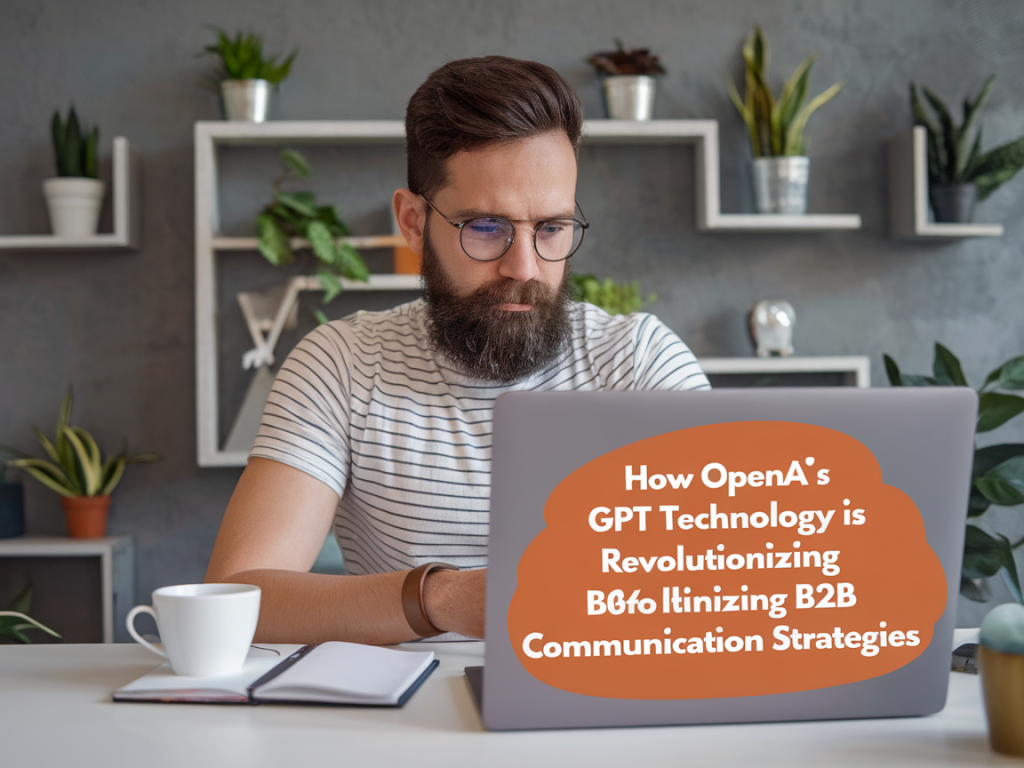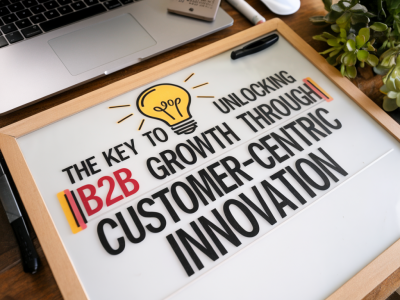
When we talk about the cutting-edge technologies shaping the business world, OpenAI's GPT technology undoubtedly takes center stage. As someone who has spent years immersed in the evolving dynamics of industries, I can confidently say that tools like GPT are not just disruptive—they’re transformative. In this article, I want to walk you through how GPT is revolutionizing B2B communication strategies and why it's something every forward-thinking entrepreneur and marketer should pay attention to.
Understanding GPT: More Than Just a Chatbot
At its core, GPT (Generative Pre-trained Transformer) is an advanced AI language model that can generate human-like text based on a given prompt. It’s the driving force behind tools like ChatGPT, which you may have already encountered. But let’s get one thing straight: GPT is not your average chatbot software. It can analyze, generate, and adapt your written communication in ways that were unthinkable just a few years ago.
Think about this: In the B2B world, communication is the backbone of everything—from maintaining client relations to building an impactful marketing strategy. Traditional communication processes often involve significant bottlenecks: writing emails, responding to inquiries, customizing proposals, or even brainstorming the right messaging for your campaigns. GPT, with its uncanny ability to mimic tailored, professional language at scale, is flipping the script.
Boosting Efficiency with AI-Powered Content Creation
For B2B companies, creating high-quality content—be it whitepapers, case studies, or sales emails—is often a labour-intensive task. Trust me, there have been numerous occasions in my entrepreneurial journey where content teams were bogged down meeting deadlines. This is where GPT enters as an absolute game-changer.
GPT-assisted platforms can draft outlines, generate engaging headlines, and even write entire blog posts or email campaigns with minimal effort. Tools like Jasper AI, built on GPT technology, are already gaining traction in businesses of all sizes. Say you need to pitch a new product to a prospective client. Instead of spending hours crafting the perfect email, GPT allows you to input a few bullet points, and voilà—it produces a professionally written email ready to go.
What makes it extraordinary is not just the speed but the ability to customize the tone and style of the content to fit your brand’s persona. Whether you’re targeting C-suite executives in a formal tone or small-business owners with a friendly, conversational voice, GPT can do it all.
Hyper-Personalization: The Holy Grail of B2B Marketing
If there’s one thing B2B buyers crave, it’s personalization. According to a survey by Gartner, 77% of B2B buyers said their latest purchase was complex or difficult—highlighting the importance of a tailored experience that simplifies decision-making. GPT delivers on this front in ways traditional marketing automation tools cannot.
Imagine your sales or marketing team responding to leads in real time, crafting tailored responses that feel entirely human yet are powered by lightning-fast AI. GPT’s ability to analyze customer data and context can help craft replies to inquiries, follow-ups, and social media interactions that aren’t just generic but targeted and meaningful. This elevates the buyer’s journey while cutting down response times dramatically.
Platforms like HubSpot, for instance, are now exploring GPT-powered integrations to supercharge CRM workflows, enabling businesses to reply to customer concerns with hyper-personalized messaging. Such advancements are redefining what’s possible in relationship-driven B2B ecosystems.
Enhancing Internal Communication and Collaboration
While much of the hype around GPT revolves around external communication, let’s not overlook its potential within organizations themselves. Large B2B organizations often struggle with internal alignment—marketing teams don’t always speak the same “language” as sales, and leadership struggles to communicate a unified vision to their teams.
With GPT, creating clear and contextually relevant internal communications, from memos to training materials, becomes a seamless process. Need a quick summary of a 30-page report for your next meeting? GPT can generate one in seconds. Want to draft an internal newsletter that contextualizes quarterly performance? It’s got you covered.
And collaboration? Tools like Microsoft Teams are already incorporating GPT-based AI to suggest meeting notes, summarize discussions, and even coach teams on improving communication and productivity. It’s like having an AI-powered assistant that improves clarity and coherence across every department.
Reducing Errors and Enhancing Consistency
Consistency is critical in B2B communication. Whether you're interacting with partners, suppliers, or clients, your messaging needs to resonate with clarity and professionalism across all touchpoints. But even the best of us can slip up occasionally—typos, incorrect data, or inconsistencies can creep into emails and reports.
GPT significantly reduces these risks. AI-driven tools can proofread and refine drafts while ensuring adherence to brand guidelines and tone of voice. Platforms like Grammarly, integrated with GPT technology, are already helping businesses deliver flawless communication. Accuracy isn’t just a “nice-to-have” in B2B; it’s essential for building trust and credibility.
Challenges and Ethical Considerations
Let’s not ignore the elephant in the room: The use of GPT doesn’t come without its challenges. For one, no AI is completely foolproof. While GPT’s outputs are remarkable, it’s crucial to review and contextualize the content it generates. AI lacks human intuition and cannot always grasp nuances like humor, sarcasm, or cultural sensitivities that could make or break a message. This is why human oversight is essential when implementing GPT in your workflows.
Then there’s the question of ethics. Transparency with clients and customers about AI-generated content is critical. Misusing tools like GPT to create deceptive messaging—or failing to disclose when AI is involved—could harm your brand’s reputation in the long run. But when used responsibly, GPT can complement human interaction rather than replace it, creating a win-win scenario for businesses and their stakeholders.
What’s Next?
As B2B companies continue to adopt GPT technology, the possibilities for innovation are nearly limitless. We’re already seeing exciting collaborations between AI leaders like OpenAI and major brands, opening doors for smarter CRM systems, real-time insights, and communication tools that adapt to every unique business scenario.
In a dynamic environment where staying ahead is the mantra, leveraging tools like GPT isn’t just an opportunity—it’s becoming a necessity. For me, it signals the dawn of a new era, one where businesses connect more meaningfully, operate more efficiently, and embrace the boundless potential of AI-enhanced strategies.

